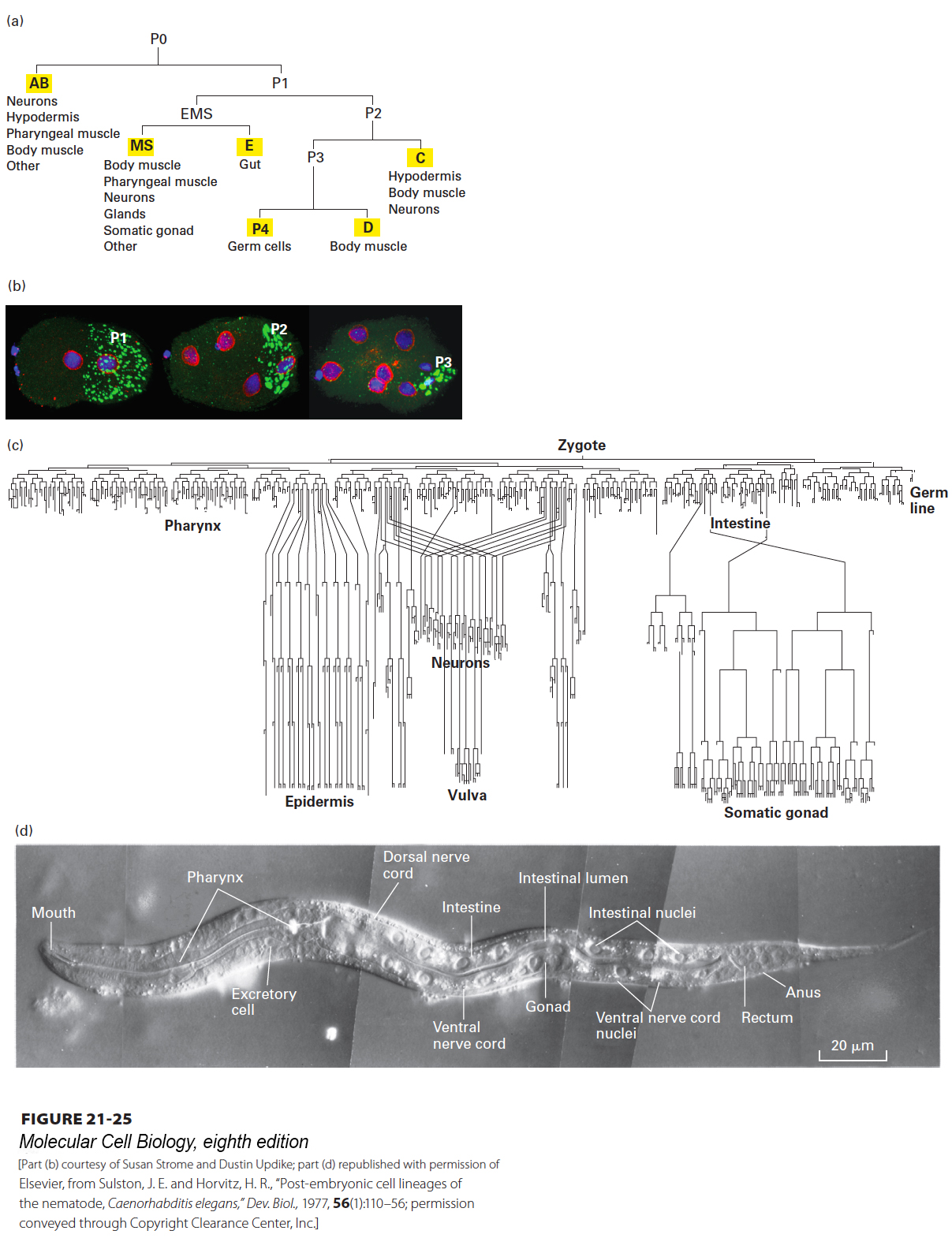
FIGURE 21- 25 Cell lineage in the nematode worm C. elegans. (a) Pattern of the first few divisions, starting with P0 (the zygote) and leading to formation of the six founder cells (yellow highlights). The first division is asymmetric, giving rise to the AB and P1 cells. The EMS cell is so named because it gives rise to most of the endoderm and mesoderm. The P4 lineage gives rise to the cells of the germ line. (b) Micrographs of two- , four- , and eight- cell embryos with DNA stained blue, the nuclear envelope red, and P granules green. The P1, P2, and P3 cells, which will give rise to the germ line, are indicated. (c) The full lineage of the entire body of the worm, showing some of the tissues formed. In this diagram, cell division is indicated by the splitting of a line, and the time of cell division is indicated in the vertical direction. (d) Newly hatched larva. Some of the 959 somatic- cell nuclei found in the adult hermaphrodite form can be seen in this micrograph obtained by differential- interference- contrast (DIC) microscopy.
[Part (b) courtesy of Susan Strome and Dustin Updike; part (d) republished with permission of Elsevier, from Sulston, J. E. and Horvitz, H. R., “Post- embryonic cell lineages of the nematode, Caenorhabditis elegans,” Dev. Biol., 1977, 56(1):110– 56; permission conveyed through Copyright Clearance Center, Inc.]
[Leave] [Close]